First look: Razer Project Valerie
A logical, badass extension of the Blade Pro
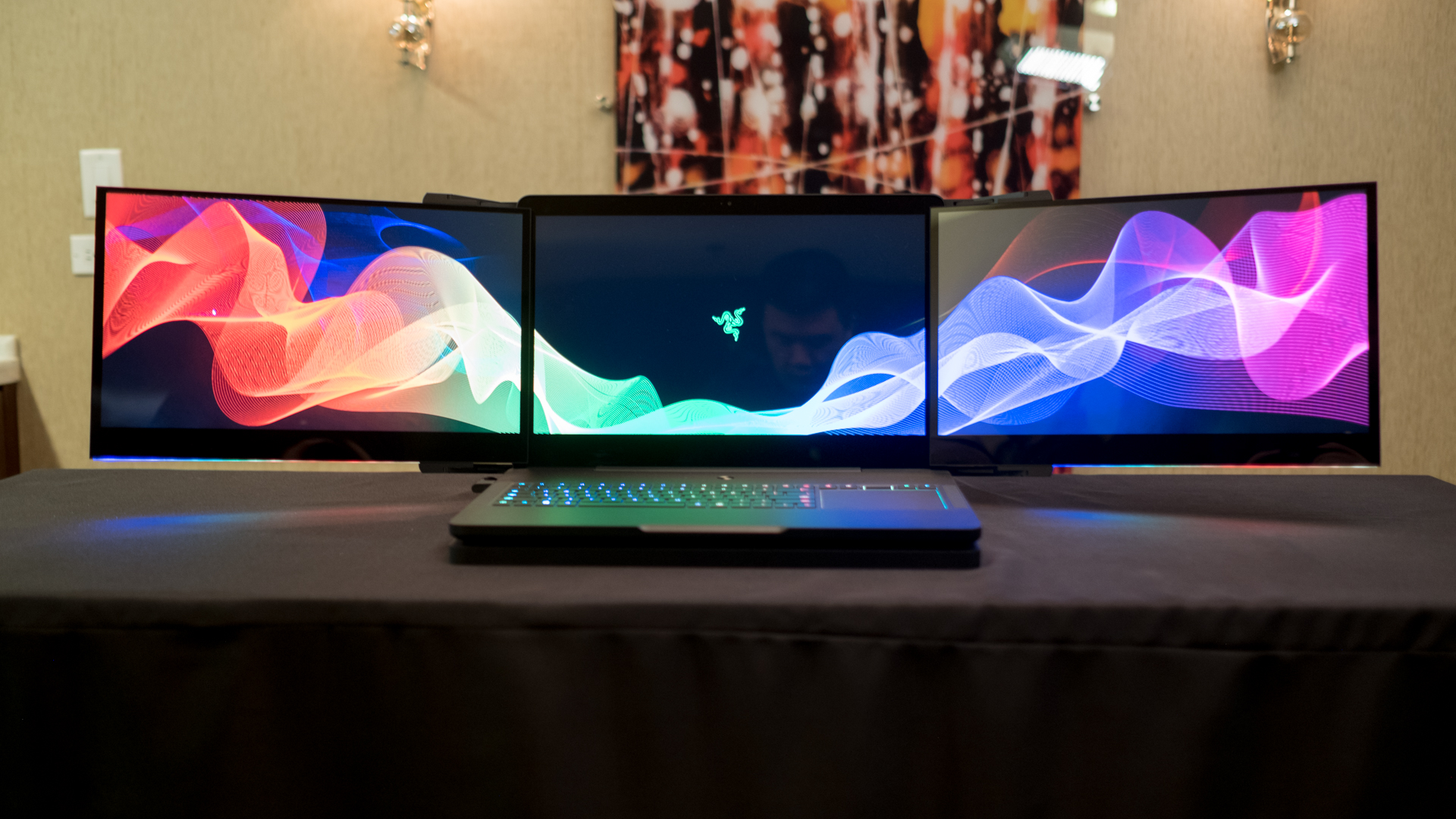
Another CES, another crazy concept device from Razer. This is how the gaming hardware maker has approached the show for years, but CES 2017 feels a little different.
That’s because Project Valerie, Razer’s concept for a three-screen mega laptop, is something that could feasibly be ready to buy within the not-so-distant future. (Not like Project Christine, as incredible as it was.)
We’ve not only handled Project Valerie, but we’ve actually played games on it – that’s how close Razer is to a viable product here, and it's impressive.
Design
If Project Valerie looks familiar to you somehow, that’s because the device was built on top of the existing 17.3-inch Razer Blade Pro chassis, a laptop that we lauded in our full review. However, the screen design has been completely revamped.
The lid is an entirely new piece housing the same 4K IGZO (and 100% RGB color) screen available in the Blade Pro, made much thicker now to tuck two more of those 17-inch panels behind the main display. We’re told that these are simply two more of the same display, each attached via an articulating arm that sends the panel sliding along rails either in or out from behind the main screen.
Now, here’s the coolest part: while we weren’t able to see it in action at the show, Razer says that – if Valerie makes it to market, these displays will eject from behind the primary panel automatically with either a hardware button or through software.
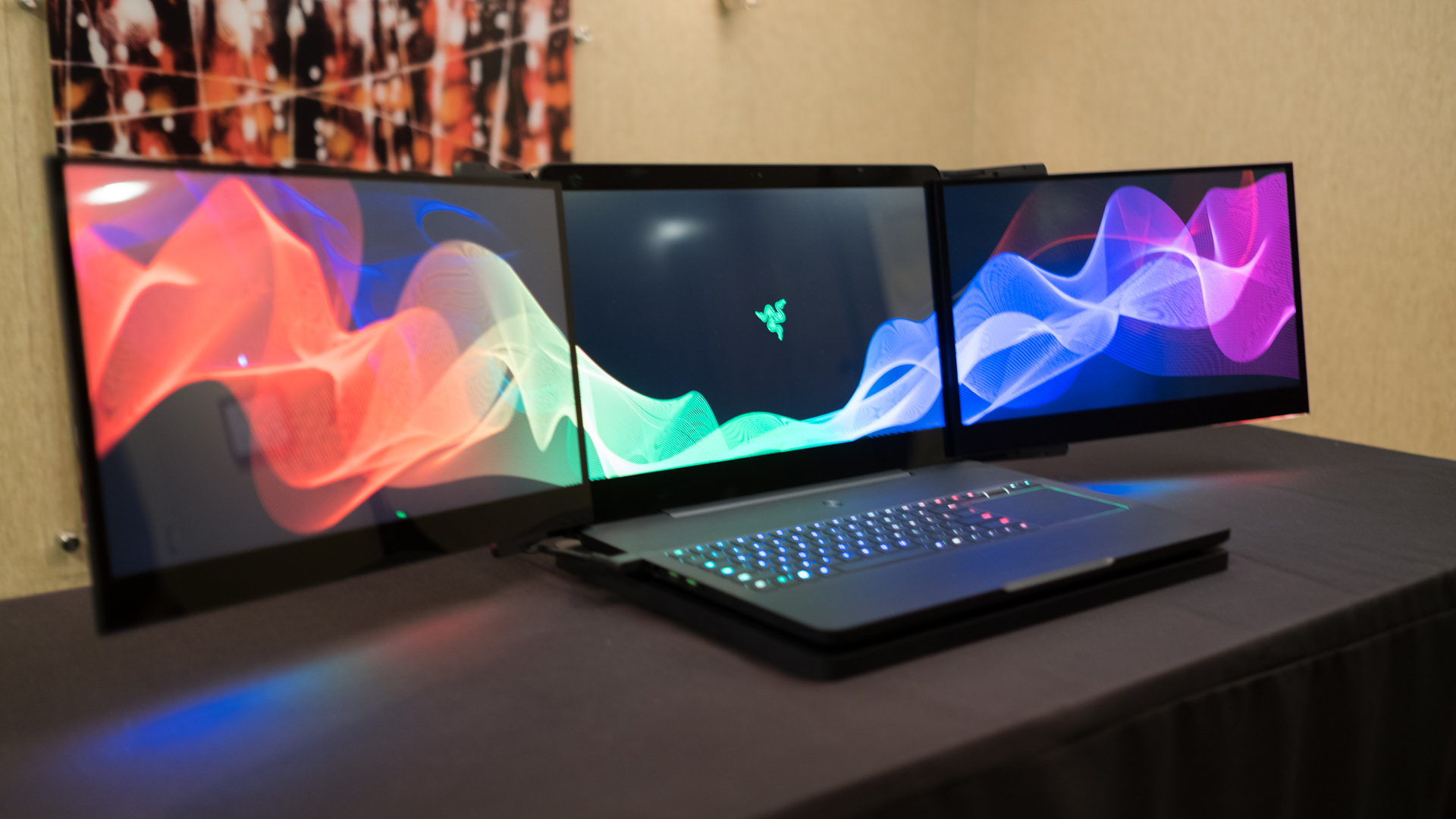
Better yet, Razer has incorporated its Chroma lighting beneath each of these additional panels that will work with all games that directly support Razer’s lighting tech. It creates an even more premium vibe than the existing keyboard and trackpad lighting.
Get daily insight, inspiration and deals in your inbox
Sign up for breaking news, reviews, opinion, top tech deals, and more.
Oh, and those wings on the lid of the laptop that glow in Razer’s signature green? They’re just for show when the screens are deployed – Razer: always about the cool factor.
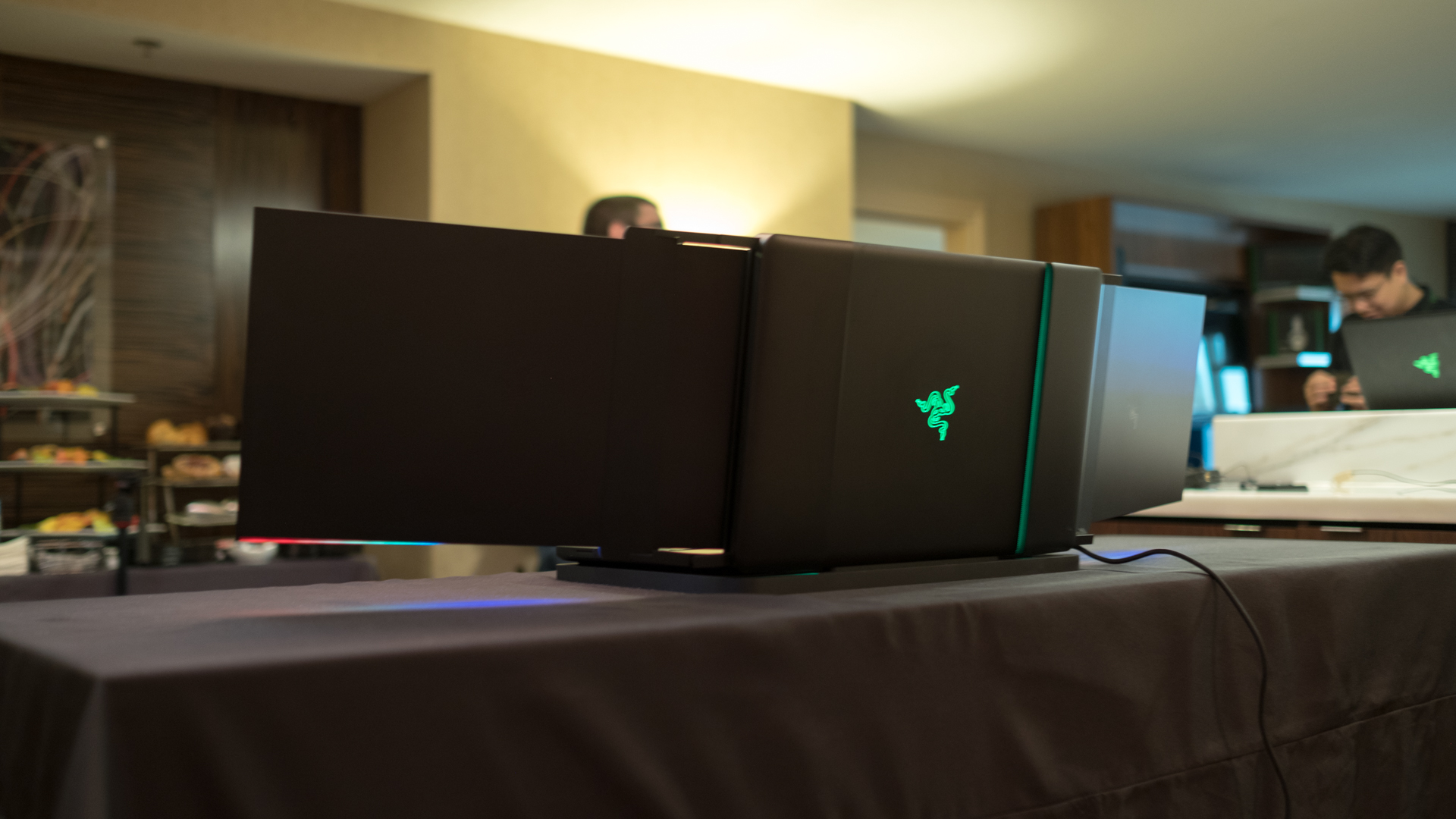
Specs and performance
Being a concept device, Razer isn’t yet prepared to give a full list of specifications for Project Valerie. That said, we have been told that the prototype version that we played with at the show was running a mobile Nvidia GTX 1080 chip.
To be honest, we were a bit skeptical of whether a single GTX 1080 chip could handle gaming at Ultra settings while pushing to not one, but three 4K displays. After playing some Battlefield 1 at those very settings, consider us cautiously optimistic.
We tore through a war zone inside a tank for a while with nary a hiccup in frame rate or image fidelity. This could be chalked up in part to Nvidia’s huge advances in mobile graphics, but also to how well Razer has synced these three displays.
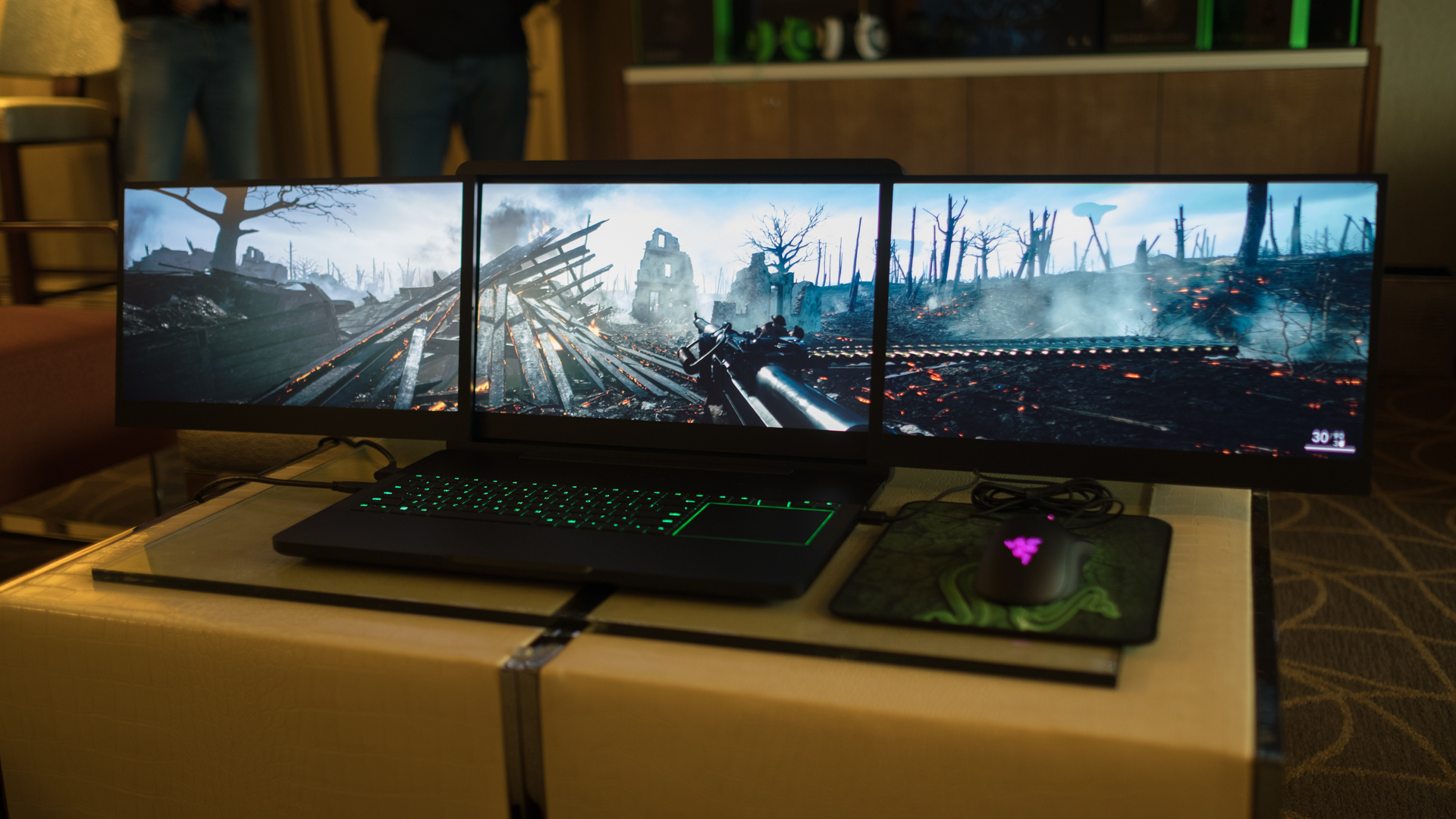
But, why our trepidation? We've already had trouble playing 4K games at Ultra settings with the new Blade Pro, the very device this concept builds upon, much less one with three 4K screens. (Then again, Battlefield 1 was the only game we tested to properly work in 4K on the Blade Pro.)
Regardless, the laptop gets awfully loud – louder than any gaming laptop we’ve ever played with – while running a game. In a machine pushing highly detailed visuals to three 4K screens, this is to be expected, but nevertheless would quickly become a bother to players who don’t like to game with headphones on.
Beyond the graphics chip that’s currently being used and the 4K IGZO screens, Razer is keeping mum on all other specifications save for how much it expects the device to weigh: between 10 and 12 pounds.
Ouch! But, for what amounts to be, frankly, the truly ultimate desktop replacement laptop, perhaps that’s a trade-off we can deal with.
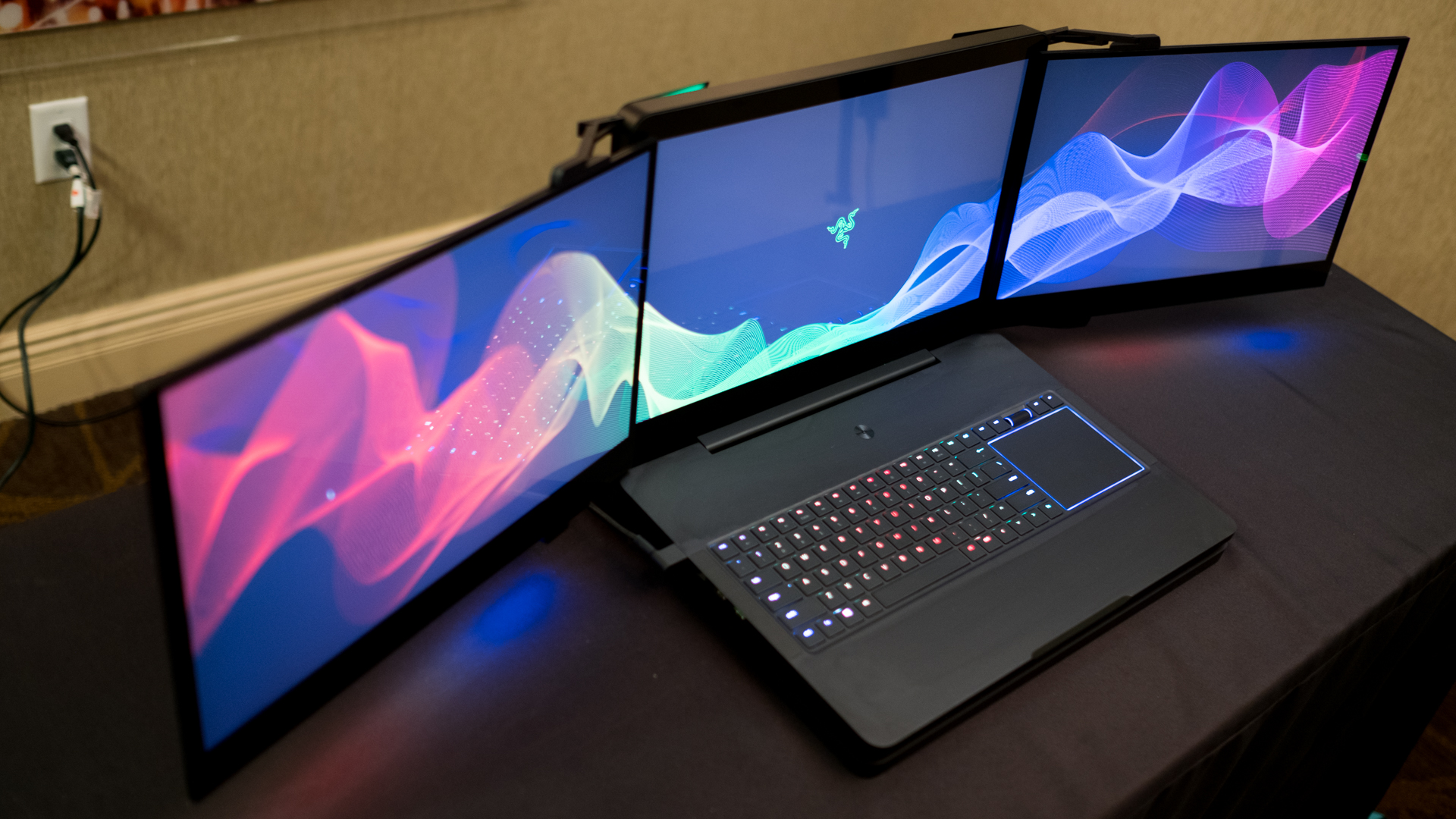
Final impressions
Project Valerie by Razer is the most exciting concept from the gaming hardware firm yet, namely because of what it accomplishes and how far along it is toward becoming a reality. It’s a logical extension of the existing Blade Pro, one that use cases both for professional and insanely hardcore PC gamers.
(Of course, we’ve been told that the chassis design and internals could change by when, or if, this device is released, which Razer will determine based on the public’s response.)
That Razer has accomplished triple-screen 4K gaming at the highest settings from a mobile graphics chip is an incredible feat, something that we still are having trouble believing. To that end, this is one laptop that we sincerely hope we get the opportunity to test in full – because that means we could buy one.
Razer is actively seeking feedback on this concept from its community as well as TechRadar readers, so be sure to tell us what you think of Project Valerie in the comments below.
New year, new tech – check out all our coverage of CES 2017 straight from Las Vegas, the greatest gadget show on Earth.
Joe Osborne is the Senior Technology Editor at Insider Inc. His role is to leads the technology coverage team for the Business Insider Shopping team, facilitating expert reviews, comprehensive buying guides, snap deals news and more. Previously, Joe was TechRadar's US computing editor, leading reviews of everything from gaming PCs to internal components and accessories. In his spare time, Joe is a renowned Dungeons and Dragons dungeon master – and arguably the nicest man in tech.
